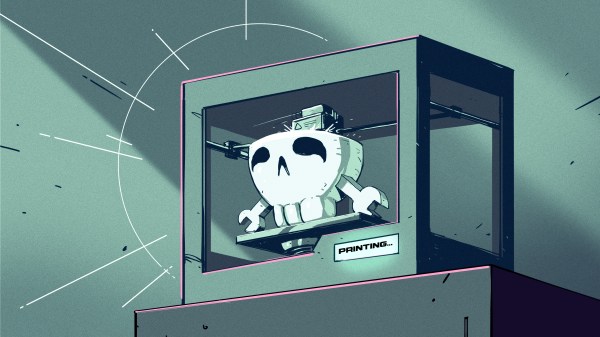We received belated word this week of the passage of Ward Christensen, who died unexpectedly back in October at the age of 78. If the name doesn’t ring a bell, that’s understandable, because the man behind the first computer BBS wasn’t much for the spotlight. Along with Randy Suess and in response to the Blizzard of ’78, which kept their Chicago computer club from meeting in person, Christensen created an electronic version of a community corkboard. Suess worked on the hardware while Christensen provided the software, leveraging his XMODEM file-sharing protocol. They dubbed their creation a “bulletin board system” and when the idea caught on, they happily shared their work so that other enthusiasts could build their own systems.
Hackaday Columns4538 Articles
This excellent content from the Hackaday writing crew highlights recurring topics and popular series like Linux-Fu, 3D-Printering, Hackaday Links, This Week in Security, Inputs of Interest, Profiles in Science, Retrotechtacular, Ask Hackaday, Teardowns, Reviews, and many more.
Open Source, Forced Innovation, And Making Good Products
The open-source hardware business landscape is no doubt a tough one, but is it actually tougher than for closed-source hardware? That question has been on our minds since the announcement that the latest 3D printer design from former open-source hardware stalwarts Prusa Research seems like it’s not going to come with design files.
 Ironically, the new Core One is exactly the printer that enthusiasts have been begging Prusa to make for the last five years or more. Since seeing hacker printers like the Voron and even crazy machines like The 100 whip out prints at incredible speed, the decade-old fundamental design of Prusa’s i3 series looks like a slow and dated, if reliable, workhorse. “Bed slinger” has become a bit of a pejorative for this printer architecture in some parts of the 3DP community. So it’s sweet to see Prusa come out with the printer that everyone wants them to make, only it comes with the bitter pill of their first truly closed-source design.
Ironically, the new Core One is exactly the printer that enthusiasts have been begging Prusa to make for the last five years or more. Since seeing hacker printers like the Voron and even crazy machines like The 100 whip out prints at incredible speed, the decade-old fundamental design of Prusa’s i3 series looks like a slow and dated, if reliable, workhorse. “Bed slinger” has become a bit of a pejorative for this printer architecture in some parts of the 3DP community. So it’s sweet to see Prusa come out with the printer that everyone wants them to make, only it comes with the bitter pill of their first truly closed-source design.
Is the act of not sharing the design files going to save them? Is it even going to matter? We would argue that it’s entirely irrelevant. We don’t have a Core One in our hands, but we can’t imagine that there is anything super secret going on inside that couldn’t be reverse engineered by any other 3DP company within a week or so. If anything, they’re playing catch up with other similar designs. So why not play to one of their greatest strengths – the engaged crowd of hackers who would most benefit from having the design files?
Of course, Prusa’s decision to not release the design files doesn’t mean that they’re turning their backs on the community. They are also going to offer an upgrade package to turn your current i3 MK4 printer into the new Core One, which is about as hacker-friendly a move as is possible. They still offer kit versions of the printers at a discount, and they continue to support their open-source slicer software.
But this one aspect, the move away from radical openness, still strikes us as bittersweet. We don’t have access to their books, of course, but we can’t imagine that not providing the design files gains them much, and it will certainly damage them a little in the eyes of their most devoted fans. We hope the Core One does well, but we also hope that people don’t draw the wrong lesson from this – that it does well because it went closed source. If we could run the experiment both ways, we’d put our money on it doing even better if they released the design files.
Hack On Self: The Un-Crash Alarm
Ever get home, tired after work, sit down on a couch, and spend an hour or two sitting down without even managing to change into your home clothes? It’s a seriously unpleasant in-between state – almost comfortable, but you know you’re not really at rest, likely hungry, and even your phone battery is likely about to die. This kind of tiredness can get self-reinforcing real quick – especially if you’re too tired to cook food, or you’re stuck in an uncomfortable position. It’s like the inverse of the marshmallow test – instead of a desire, you’re dealing with lack thereof.
I’ve been dealing with this problem a lot within the last two years’ time. Day to day, I could lose hours to this kind of tiredness. It gets worse when I’m sick, and, it’s gotten worse on average after a few bouts of COVID. It’s not just tiredness, either – distractability and tiredness go hand in hand, and they play into each other, too.
My conclusion, so far, was pretty simple. When I’m tired, delayed but proper rest is way better than “resting” in a half-alert state, even if that takes effort I might not have yet. So, it’s important that I can get up, even if I’m already in a “crashed” position. Sure, I could use tricks like “do not sit down until I’m ready to rest”, but that only works sometimes – other times, the tiredness is too much to handle.
Audio files and sound playback library in hand, negative reinforcement methods fresh in my mind, I went and cooked together a very simple solution. Continue reading “Hack On Self: The Un-Crash Alarm”
Hackaday Podcast Episode 297: Prusa Eschews Open Source Hardware, The Lemontron Prints Upside-Down, And The Vecdec Cyberdeck Does Minority Report
This week on the Podcast, Hackaday’s Elliot Williams and Kristina Panos joined forces to bring you the latest news, mystery sound, and of course, a big bunch of hacks from the previous week.
First up in the news: Elliot was at Electronica and spotted a wild Raspberry Pi Compute Module 5. And just as excitingly, FreeCAD has finally reached version 1.0, which means it’s stable and ready for real work.
Kristina is getting tired of losing at What’s That Sound, so she’ll have to come up with some to stump you all. Can you get this week’s sound? If you can, and your number comes up, you get a special Hackaday Podcast t-shirt.
Then it’s on to the hacks and such, but first, there’s even more news and opinion to be had in Tom’s review of Prusa’s new printer, which happens to be closed-source. Then we’ll discuss another printer that prints upside-down, an elegant cyberdeck, and a cyberpunk pocket watch. Finally, we talk about the Great Redbox Cleanup, and take a look at man-made stalactites.
Check out the links below if you want to follow along, and as always, tell us what you think about this episode in the comments!
Download in DRM-free MP3 and savor at your leisure.
This Week In Security: Footguns, Bing Worms, And Gogs
The world of security research is no stranger to the phenomenon of not-a-vulnerability. That’s where a security researcher finds something interesting, reports it to the project, and it turns out that it’s something other than a real security vulnerability. There are times that this just means a researcher got over-zealous on reporting, and didn’t really understand what was found. There is at least one other case, the footgun.
A footgun is a feature in a language, library, or tool that too easily leads to catastrophic mistake — shooting ones self in the foot. The main difference between a footgun and a vulnerability is that a footgun is intentional, and a vulnerability is not. That line is sometimes blurred, so an undocumented footgun could also be a vulnerability, and one possible solution is to properly document the quirk. But sometimes the footgun should really just be eliminated. And that’s what the article linked above is about. [Alex Leahu] takes a look at a handful of examples, which are not only educational, but also a good exercise in thinking through how to improve them.
Continue reading “This Week In Security: Footguns, Bing Worms, And Gogs”
USB-C For Hackers: Reusing Cables
Your project needs a cable, and since USB-C cables are omnipresent now, it’s only natural to want to reuse them for your evil schemes. Ever seen USB 3.0 cables used for PCIe link carrying duty? It’s because USB 3.0 cables are built to a reasonably high standard, both sockets and cables are easy to find, and they’re cheap. Well, USB-C cables beat USB 3.0 cables by all possible metrics.
Let’s go through USB-C cable reuse in great detail, and see just what exactly you get when you buy either a gas station C-C USB 2.0 cable, or, the fanciest all-features-supported 240 W Thunderbolt cable that money can buy. Looking for a cable to cut, or something to pass a seriously high-speed link? You’re reading the right article.
The Omnipresent Cables
USB-A to USB-C cables are the least interesting. They’re equivalent to a microUSB to USB-A cable, except there’s a resistor on the USB-C plug, connected from VBUS to one of the CC pins. That’s it. The cable contains four conductors, there’s really not much new. Save these cables for all the devices still built without the 5.1 kΩ resistors.
Now, a USB-C to USB-C cable – let’s say, 60 W max, the default USB-C cable capability. If your cable says anything less than 60 W, say, “2 A” or “15 W”, that’s a lie – it can handle 60 W no problem, all USB-C to C cables can do 60 W. This cable is also cool – for one, it has five conductors; GND, VBUS, D+, D-, and CC. Two of them (GND and VBUS) are guaranteed to be thick enough to carry 3 A without much voltage drop if any, too!
FLOSS Weekly Episode 810: A Rising Wallet Pays For All Boats
This week, Jonathan Bennett, Randal Schwartz, and Aaron Newcomb chat about Linux, the challenges with using system modules like the Raspberry Pi, challenges with funding development, and more!
Continue reading “FLOSS Weekly Episode 810: A Rising Wallet Pays For All Boats”

















